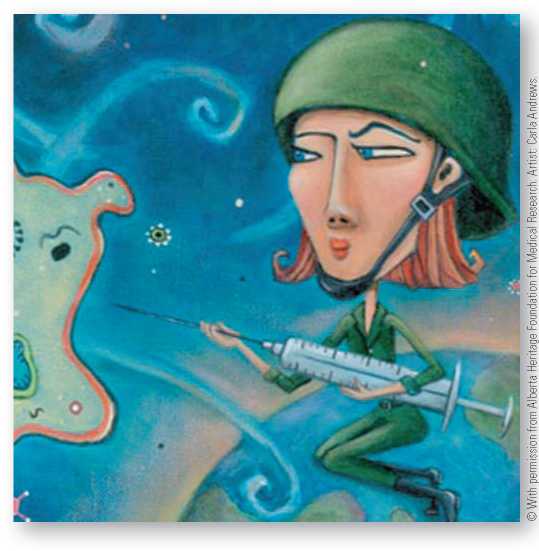Evolutionary medicine—an approach to human sickness and health combining principles of evolutionary theory and human evolutionary history—draws from both scientific medicine and anthropology. While it may seem at first to concentrate on human biological mechanisms, evolutionary medicine’s emphasis is true to the biocultural integration that figures so prominently in anthropological approaches. In this approach, biological processes are given cultural meanings, and cultural practices are understood to affect human biology.
As with evolutionary theory in general, it is difficult to prove conclusively that specific ideas and theories from evolutionary medicine are indeed beneficial to human health. Instead, scientists work to amass a sufficient body of knowledge that supports their theories. Where appropriate, the theories can lead to hypotheses that can be tested experimentally. Frequently treatments derived from evolutionary medicine lead to alterations in cultural practices and to a return to a more natural state in terms of human biology. As described in the Biocultural Connection in Chapter 9, evolutionary medicine has contributed to current attitudes about the diseases of civilization.
The work of biological anthropologist James McKenna is an excellent example of evolutionary medicine. McKenna has suggested that the human infant, immature compared to some other mammals, has evolved to cosleep with adults who provide breathing cues to the sleeping infant, protecting the child from sudden infant death syndrome (SIDS).243 He uses cross-cultural data of sleeping patterns and rates of SIDS to support his claim.
McKenna conducted a series of experiments documenting differences between the brainwave patterns of mother-infant pairs who co-sleep compared to mother-infant pairs who sleep in separate rooms. These data fit McKenna’s theory, challenging North America’s predominant cultural practice of solitary sleeping. Further, McKenna shows how the cultural pattern of sleeping directly impacts infant feeding practices, demonstrating that co-sleeping and breastfeeding are mutually reinforcing behaviors.
Evolutionary medicine suggests that cultural practices in industrial and postindustrial societies are responsible for a variety of other biomedically defined diseases, ranging from psychological disorders to hepatitis (inflammation of the liver).
Symptoms as Defense Mechanisms
Scientists have documented that when faced with infection from a bacterium or virus, the human body mounts a series of physiological responses. For example, as a young individual learns his or her culture’s medical system, the person might learn to recognize an illness as a cold or flu by responses of the body, such as fever, aches, runny nose, sore throat, vomiting, or diarrhea.
Think of how you may have learned about sickness as a young child. A caregiver or parent might have touched your forehead or neck with the back of the hand or lips to gauge your temperature. Maybe you had a thermometer placed under your arm or in your mouth to see if you had an elevated temperature or fever. (In the past, young children’s temperatures were usually taken rectally in North America.) If any of these methods revealed a temperature above the value defined as normal, a medicine might have been given to lower the fever.
Evolutionary medicine proposes that many of the symptoms that biomedicine treats are themselves nature’s treatments developed over millennia. Some of these symptoms, such as fever, perhaps should be tolerated rather than suppressed, so the body can heal itself. An elevated temperature is part of the human body’s response to infectious particles, whereas eliminating the fever provides favorable temperatures for bacteria or viruses. Similarly within some physiological limits, vomiting, coughing, and diarrhea may be adaptive as they remove harmful substances and organisms from the body. In other words, the cultural prescription to lower a fever or suppress a cough might actually prolong the disease.
Evolutionary biologist Margie Profet proposes a particular benefit for the symptoms of nausea and vomiting during early pregnancy.244 She suggests that many plants,
Evolutionary medicine An approach to human sickness and health combining principles of evolutionary theory and human evolutionary history.
Particularly those in the broccoli and cabbage family, naturally contain toxins developed through the plants’ evolutionary process to prevent them from being eaten by animals. Profet suggests that eating these plants during the first weeks of pregnancy, when the developing embryo is rapidly creating new cells through mitosis and differentiating into specific body parts, makes the embryo vulnerable to mutation. Therefore, a heightened sense of smell and lowered nausea threshold serve as natural defenses for the body. Pregnant women tend to avoid these foods, thus protecting the developing embryo.
Evolution and Infectious Disease
Understanding infectious disease is all the more important in a globalizing world where people, viruses, and bacteria cross national boundaries freely. Evolutionary medicine provides key insights with regard to infectious disease.
First, if infectious disease is viewed as competition between microorganisms and humans—as it is in biomedicine where patients and doctors “fight” infectious disease—microorganisms possess one very clear advantage. Viruses, bacteria, fungi, and parasites all have very short life cycles compared to humans. Therefore, when competing on an evolutionary level, they will continue to pose new threats to health, because any new genetic variants appearing through a random mutation will quickly become incorporated in the population’s genome. This notion is of particular importance with regard to the use of antibiotics to fight infectious disease.
While antibiotics do kill many bacteria, increasingly resistant strains are becoming more common. “Resistant strains” refers to genetic variants of a specific bacterium that are not killed by antibiotics. If a resistant strain appears in an infected individual who is being treated with antibiotics, the removal of all the nonresistant strains essentially opens up an entire ecological niche for that resistant strain inside the infected human. Here, without competition from the original form of the bacterium wiped out by the antibiotic, this mutant can proliferate easily and then spread to other individuals. The practice of taking antibiotics artificially alters the environment inside the human body.
In order to avoid the development of resistant strains, complex lengthy treatment regimes, often of multiple drugs, must be followed exactly. These expensive treatments are cost-prohibitive in many parts of the world. The unfortunate result is not only increased human suffering but also the possibility of creating environments for the development of resistant strains as individuals receive partial treatments.
Another problem is that although individuals seek treatment within their own country’s health care system, infectious microbes do not observe these same national boundaries. To eradicate or control any infectious process, the world has to be considered in its entirety.

Medical anthropologist Emily Martin has shown that scientific depictions of infectious disease draw upon military imagery common to the culture of the United States. Biomedical treatments involve taking antibiotics to kill “invading” organisms. An evolutionary perspective suggests that the quick life cycle of microorganisms makes this “battle” a losing proposition for humans.
On a positive note, treatments can also be allowed to flow freely. For example, Brazil’s HIV/AIDS program is internationally recognized as a model for prevention, education, and treatment for several reasons. Through a national policy of developing generic alternative antiretroviral agents and negotiating for reduced prices on patented agents, in 1996 Brazil became the first country to guarantee free antiretroviral access to all its citizens. At the same time, Brazilian public health officials developed counseling and prevention programs in collaboration with community groups and religious organizations. Their AIDS program’s success is in part due to the candid public education on disease transmission targeted at heterosexual women and young people, who are now the fastest-growing groups affected by HIV.
In 2004, Brazil continued its innovations with the South to South Initiative providing assistance to the HIV and AIDS programs in the Portuguese-speaking African countries of Mozambique and Angola. The Brazilian approach of providing free antiretroviral agents and collaborating with civil and religious groups to develop appropriate counseling, education, and prevention programs has been replicated directly in these African countries.245
Another method for fighting infectious disease is the development of vaccines. These stimulate the body to mount its own immune response from the vaccine that will protect the individual from the real infectious agent if the individual is exposed at a later date. Vaccinations have been responsible for major global reduction of disease, as in the case of smallpox. Historical records show that people in India, China, Europe, and the colonizers of North America practiced a form of vaccination for this deadly disease through what were known as “pox parties.”
Recently this tradition has been revived by parents who choose to deliberately expose their children to chicken pox rather than opt for the vaccine. Despite numerous medical reports to the contrary, some parents believe that vaccinations may lead to other health problems. Although the vaccine to eradicate smallpox—a disease that killed 300 million people in the 20th century alone—is clearly beneficial, it is harder to convince parents of the need for vaccines for less fatal, although still serious, childhood diseases.
The vaccine for chicken pox provides an interesting case in point. Before this vaccination became standard care in the United States, most American children experienced chicken pox as a rite of childhood. Parents watched their children become covered with ugly poxes that then disappeared. This experience modeled a pattern of intense sickness followed by full recovery, which, in and of itself, can provide some comfort. Only very rarely is chicken pox fatal.
Infectious disease and the human efforts to stop it always occur in the context of the human-made environment. Humans have been altering their external environments with increasing impact since the Neolithic revolution, resulting in an increase in a variety of infectious diseases. In this regard, evolutionary medicine shares much with political ecology—a discipline closely related to medical anthropology and described below.




 World History
World History









